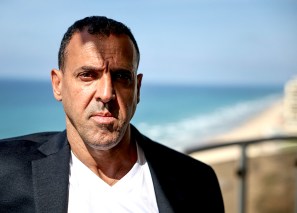Glorious, bloodless, last, perhaps all of those things, but the revolution of 1688 was hardly a revolution at all. It was the neat solution to a succession crisis: how to keep the throne of England secure against a Roman Catholic successor to the Roman Catholic James II. The essential ingredients were the resolve of James’s Protestant son-in-law, William of Orange, to bring Great Britain into permanent alliance with the Netherlands against France and, in the face of that resolve, James’s timidity and eventual flight. The underlying reason that explains how, in the end, James managed to make enemies of the Tories and Whigs, Anglicans and Protestant Dissenters was the long-fermented, ruling fear of the populace that Great Britain might fall victim to ‘popery and arbitrary government’. James’s demise was a repeat, in miniature, of the fall of his father, Charles I.
All this Patrick Dillon makes clear in his excellent, lively account, which uses short chapters that highlight historically obscure personalities to draw the reader into the story. The method does not lend itself to depth of historical analysis. Half-buried are the tortuous windings of high politics and the constitutional wrangles of James’s reign. A small loss: they can be found elsewhere. The gain is that the reader is given a front-row seat to hear the babel of chatter, the rumours, sentiments, grievances, bits of information and misinformation —what the Dissenting clergyman, Stephen Towgood, called ‘the frequent tidings and great fears’ — that reverberated in coffee-houses and gave life to the ebbings and flowings of the political crisis.
Small things are noticed: that in 1688, for example, the phrase ‘mobile vulgus’, used of anti-popery rioters, was first shortened to ‘mob’, and that a few years earlier ‘nostalgia’ was coined by a young doctor who observed among young men the ‘misery resulting from the burning desire to return to one’s own country’. By mixing the political drama with mundane matters — exotic plant imports changing the nature of botany and gardening; dress fashions and furniture styles being introduced from Paris — Dillon places it amid the distractions of everyday life.
His subtitle need not be taken literally. Modernity is being created every minute. But his book does capture the excitement of new possibilities in a world that was shaking off the last remnants of mediaeva-lism. Nowhere was this more evident than in commerce and finance. Thomas Frith’s development of Soho in the 1670s not only epitomised the expansion of London after the Great Fire and introduced the new architecture of symmetrical brick townhouses; it also depended upon new financial methods based on credit, the emergence of a ‘risk culture’ (Frith ended a ruined man) that inhabited the stock market, and a new understanding of what constituted wealth.
Just over the water, in William of Orange’s United Provinces, free institutions and religious toleration went hand-in-hand with expanding trade and prosperity. Royal absolutism, by inference, meant economic stagnation; trade, not land ownership, defined wealth. Mercantilism, with its static measurement of wealth by gold and silver reserves, was in its death throes. The real power of Amsterdam, Sir William Temple observed, lay not in ‘bags of metal’, but ‘in the credit of the whole town or state of Amsterdam’. As the idea that wealth was infinitely expandable took hold, consumerism sloughed off its mediaeval taint of sinfulness. In a competitive eco-nomy, things, in the words of one property developer, did not have a fixed value: fashion, revealed by buying and selling, conferred worth.
The new risk culture had philosophical and scientific underpinnings. The discovery of the calculus, of a way of measuring probabilities, was accompanied by a gambling boom and the introduction in Great Britain (it remained banned almost everywhere else) of life insurance. John Locke’s Essay on Human Understanding, which rooted all knowledge in sense perceptions of the natural world, opened up the market in ideas. Truths took on the appearance of mere opinions. Increased knowledge of worlds beyond Europe, with their own systems of belief, gave sustenance to the argument that religion had an anthropological base. Where, then, were the certainties of the Christian faith? What, at any rate, was the force of that faith when Isaac Newton’s Principia mathematica, which brought two centuries of cosmology to a culminating point, implied that God, circumscribed by his own laws that governed the universe, was a limited, constitutional monarch incapable of intervening in history?
As in the world of ideas, so in politics. Throughout the 17th century Great Britain had been subject to the turbulence and bloodshed of a mighty quarrel to decide which were the right forms of government in Church and State. By 1700 the answer was clear: none. The new political world was to be ‘a place of alternatives and choices’ in which political differences did not have to end in recourse to arms. Whig and Tory, Anglican and Dissenter ‘would co-exist — to everyone’s surprise — in a state of permanent, dynamic equilibrium’. A changed mentality was emerging. In this book its map has been entertainingly drawn.





Comments